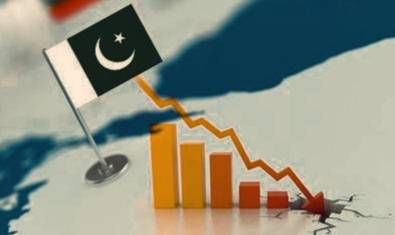
With the fiscal deficit widening by more than 115% in the first four months (July-October) of the current fiscal year, the Ministry of Finance has forecast inflation to stay high — between 21-23% — and the country's economic situation will face with ‘severe headwinds’ during 2023.
“For Fiscal Year 2023, economic growth is likely to remain below the budgeted target due to devastation caused by floods. This combination of low growth, high inflation and low levels of official foreign exchange reserves are the key challenges for policymakers,” alerted the MoF on Friday in its Monthly Economic Update and Outlook.
The report, prepared by the Economic Adviser’s Wing (EAW) of the Finance Ministry, reported that the overall fiscal deficit stood at 1.5% of GDP (Rs. 1.266 trillion) during July-October of fiscal year 2022-23, as compared to 0.9% of GDP (Rs587bn) last year.
The fiscal deterioration was because of higher expenditure growth on the back of higher markup payments, while the government faces the unprecedented challenge of rehabilitating people in flood-hit areas.
The ministry said the average CPI in the first five months (July-November) of FY23 remained 25.1%, compared to 9.3% in the same period last year. “It is expected that CPI inflation will remain in the range of 21-23%”, it said.
The current account posted a deficit of $3.1bn for the July-November period in fiscal year 2022-23, against a deficit of $7.2bn last year. This was mainly due to an improvement in the trade balance thanks to import restrictions and an unavailability of dollar currency.
The current account deficit (CAD) shrank to $276 million in November, as against $569m in October.
In the industrial sector, the MoF conceded that downward trends were prevalent and there was little reason to be optimistic about growth. Industrial activity, measured by the large-scale manufacturing (LSM) index output, came in lower than expected in October. The LSM sector was the most exposed to external conditions.
“For Fiscal Year 2023, economic growth is likely to remain below the budgeted target due to devastation caused by floods. This combination of low growth, high inflation and low levels of official foreign exchange reserves are the key challenges for policymakers,” alerted the MoF on Friday in its Monthly Economic Update and Outlook.
The report, prepared by the Economic Adviser’s Wing (EAW) of the Finance Ministry, reported that the overall fiscal deficit stood at 1.5% of GDP (Rs. 1.266 trillion) during July-October of fiscal year 2022-23, as compared to 0.9% of GDP (Rs587bn) last year.
Low growth, dwindling reserves and high expenditure will remain the key challenges for Pakistan's economy in 2023
The fiscal deterioration was because of higher expenditure growth on the back of higher markup payments, while the government faces the unprecedented challenge of rehabilitating people in flood-hit areas.
The ministry said the average CPI in the first five months (July-November) of FY23 remained 25.1%, compared to 9.3% in the same period last year. “It is expected that CPI inflation will remain in the range of 21-23%”, it said.
The current account posted a deficit of $3.1bn for the July-November period in fiscal year 2022-23, against a deficit of $7.2bn last year. This was mainly due to an improvement in the trade balance thanks to import restrictions and an unavailability of dollar currency.
The current account deficit (CAD) shrank to $276 million in November, as against $569m in October.
In the industrial sector, the MoF conceded that downward trends were prevalent and there was little reason to be optimistic about growth. Industrial activity, measured by the large-scale manufacturing (LSM) index output, came in lower than expected in October. The LSM sector was the most exposed to external conditions.

